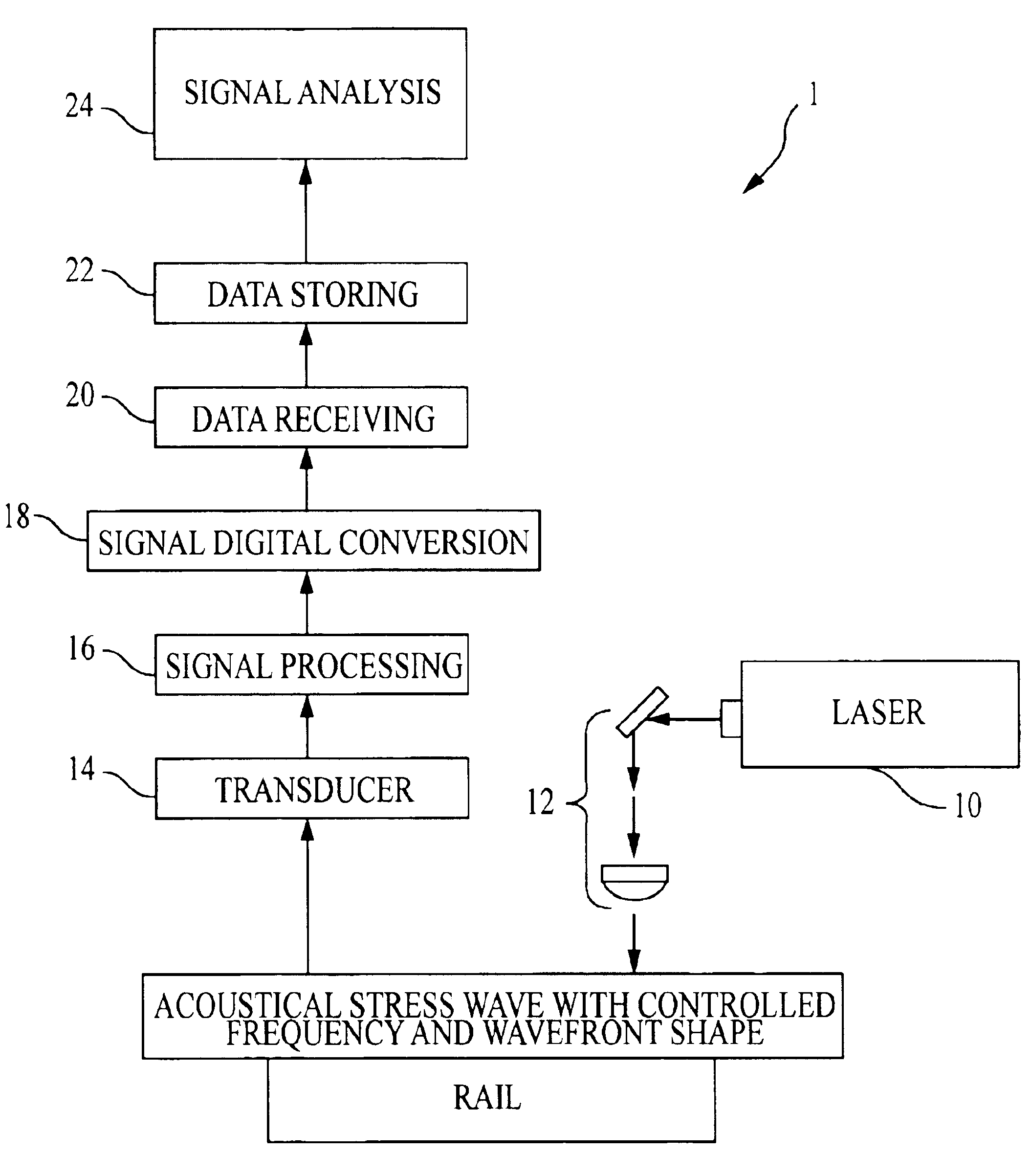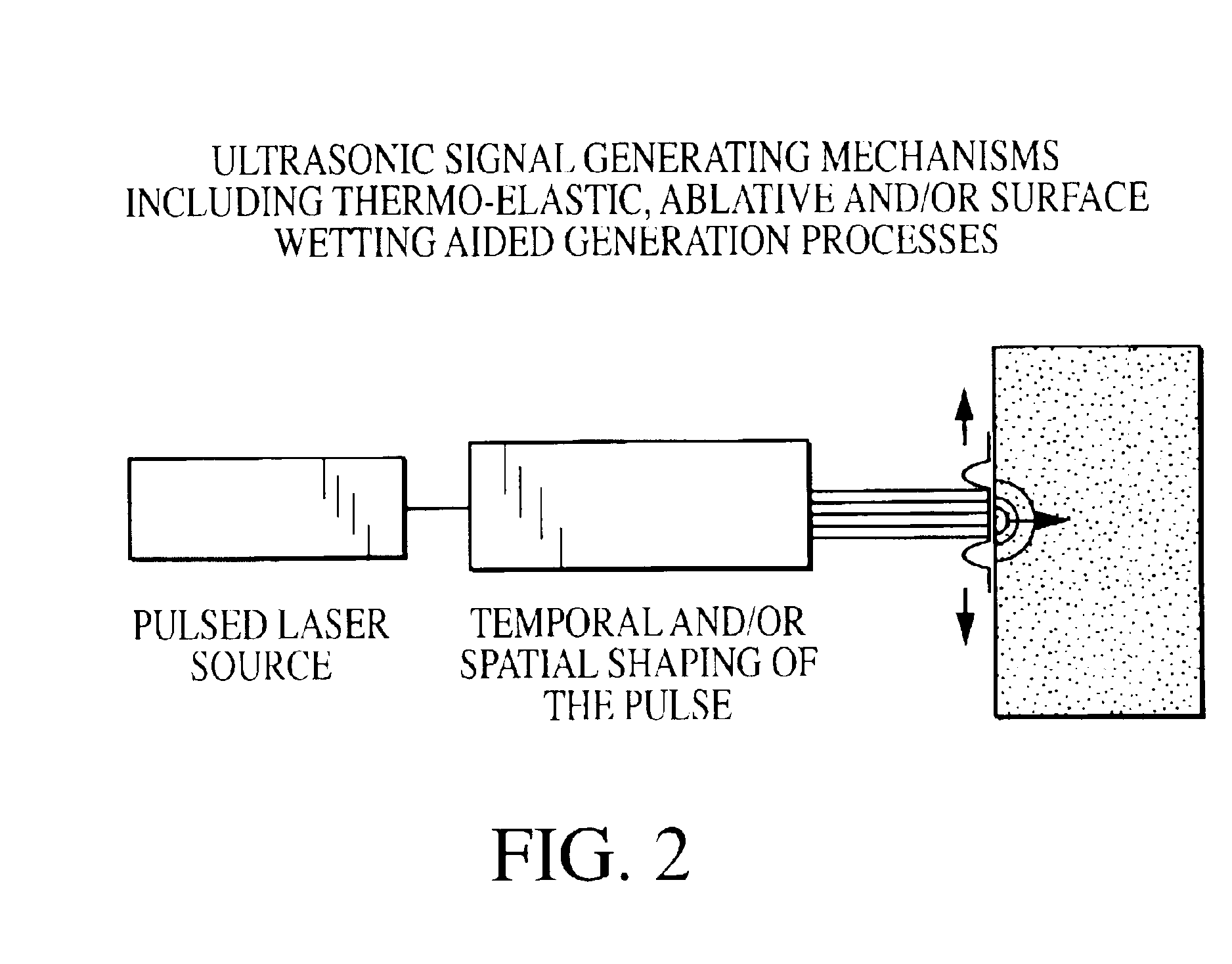Laser-air, hybrid, ultrasonic testing of railroad tracks
a technology of ultrasonic testing and rail tracks, applied in the direction of instruments, specific gravity measurement, processing detected response signals, etc., can solve the problems of inability to detect internal defects in rails, maintenance of rails, and visual inspection. too slow,
- Summary
- Abstract
- Description
- Claims
- Application Information
AI Technical Summary
Benefits of technology
Problems solved by technology
Method used
Image
Examples
Embodiment Construction
[0047]Before explaining at least one embodiment of the present invention in detail, it is to be understood that the invention is not limited in its application to the details of construction and to the arrangements of the components set forth in the following description or illustrated in the drawings. The invention is capable of other embodiments and of being practiced and carried out in various ways. For example, the preferred embodiments disclosed herein are directed to detecting flaws in railroad tracks; however, it should be understood that these detection techniques are applicable to wide range of structural materials other than just railroad tracks. Also, it is to be understood that the phraseology and terminology employed herein are for the purpose of description and should not be regarded as limiting.
[0048]As previously mentioned, in-track rail inspections are currently performed using primarily a contact, ultrasonic method. Although this method has generally proven to be r...
PUM
| Property | Measurement | Unit |
|---|---|---|
| frequencies | aaaaa | aaaaa |
| frequencies | aaaaa | aaaaa |
| liftoff distances | aaaaa | aaaaa |
Abstract
Description
Claims
Application Information
 Login to View More
Login to View More - R&D
- Intellectual Property
- Life Sciences
- Materials
- Tech Scout
- Unparalleled Data Quality
- Higher Quality Content
- 60% Fewer Hallucinations
Browse by: Latest US Patents, China's latest patents, Technical Efficacy Thesaurus, Application Domain, Technology Topic, Popular Technical Reports.
© 2025 PatSnap. All rights reserved.Legal|Privacy policy|Modern Slavery Act Transparency Statement|Sitemap|About US| Contact US: help@patsnap.com



